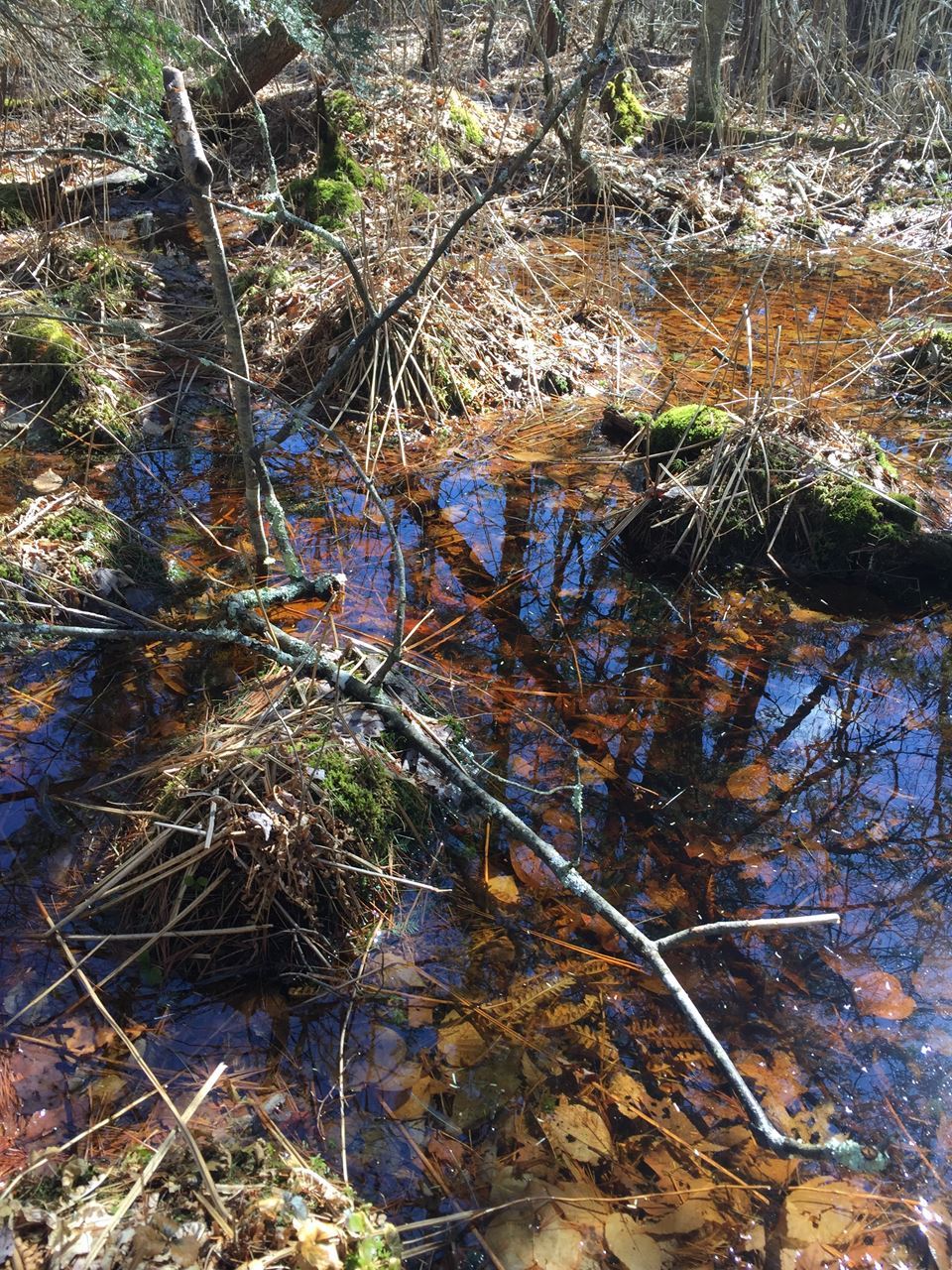Cape Ann Vernal Pond Team
 Biologist Nathan Mineo Biologist Nathan Mineo
Did You Know...?
Vernal Ponds are Biogeochemical Hotspots
Written by Nathan Mineo
Reprinted from the 2019 Cape Ann Vernal Pond Team Newsletter
Photograph by Cheryl BriscoeDid you know that vernal ponds are biogeochemical hotspots? I'm sure some of you may be thinking, "what the blue blazes is he talking about!?" Try to recall all those many days ago when you were sitting in your biology class learning about the carbon cycle, nitrogen cycle, and the phosphorus cycle. Molecules made with these elements are biogeochemical, and the cycling of these elements through our environment is crucial for the existence of life as we know it. They are some of the building blocks for essential molecules like sugars and DNA.
Decomposition is a big part of the carbon cycle. One could think of decomposition as the second step of a two-step process in the recycling of carbon. In the first step, detritivores, like isopods and caddisfly larvae, rip apart and shred leaves into small pieces. In the second step, microbes take over and further break down the leaf-litter by excreting enzymes that chemically break down the leaf particles. Some of the resulting molecules are then used by the microbes for their life processes, while others, like carbon dioxide, are released into the atmosphere for plants to use in photosynthesis.The last step in the nitrogen cycle is a process known as denitrification. This process converts nitrate into nitrogen gas (which comprises about 78% of the air we breathe). Nitrate is a byproduct of animal waste. It is fertilizer for plants, but too much in the water can be harmful for aquatic life. Denitrification is important in maintaining water quality and recycling nitrogen.
 Vernal ponds were found to be “hotspots” for the cycling of the aforementioned biogeochemicals. The term “hotspot” is not thrown around lightly in the scientific community. To be considered a hotspot, the area in question must have a significantly higher concentration of activity than the surrounding areas. In a 2014 paper published in the journal Ecosystems, Krista Capps et al. make the claim that vernal ponds are hotspots in forest ecosystems, specifically for the cycling of carbon and nitrogen. Vernal ponds were found to be “hotspots” for the cycling of the aforementioned biogeochemicals. The term “hotspot” is not thrown around lightly in the scientific community. To be considered a hotspot, the area in question must have a significantly higher concentration of activity than the surrounding areas. In a 2014 paper published in the journal Ecosystems, Krista Capps et al. make the claim that vernal ponds are hotspots in forest ecosystems, specifically for the cycling of carbon and nitrogen.
Capps and her team tested leaf-litter in three separate vernal ponds in Maine. They examined decomposition rates, denitrification rates, and extracellular enzyme activity (part of decomposition) in the three ponds for one season (March to August). The study confirmed that decomposition rates, denitrification rates, and extracellular enzyme activity were all higher in the seasonally flooded vernal ponds than in the surrounding, dry forest floor, suggesting that vernal ponds play a significant role in nutrient cycling.
The fact that vernal ponds are hotspots for biogeochemical cycling is further evidence of their importance in the ecosystem and the need to protect them. The processes occurring in vernal ponds are not only beneficial to the plants and animals in the forest, they are necessary for our own existence as well. The carbon, nitrogen, and phosphorus in our bodies has been cycling on Earth since the beginning of its existence, and some of the elements that make you you may have been cycled through a vernal pond—from tree to tadpole to bacteria to you.
Citations:
Capps, K. A., Rancatti, R., Tomczyk, N., Parr, T. B., Calhoun, A. J., & Hunter, M. (2014). Biogeochemical Hotspots in Forested Landscapes: The Role of Vernal Pools in Denitrification and Organic Matter Processing. Ecosystems,17(8), 1455-1468. doi:10.1007/s10021-014-9807-z
|